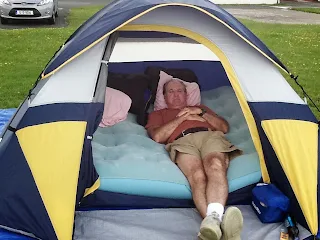 |
| Hmmm, who would win? |
A vastly misunderstood people, Vikings are often characterized as mere savages. Even the term ‘Viking’ comes from the Scandinavian ‘vikingr’ meaning pirate – so you can certainly see the parallel. But this term refers more to the time in summer when Scandinavian men would go ‘a -Viking’ and head out on a oversea expedition with the goal of trade or to work as foreign mercenaries. And, well, let’s be honest, there was quite a bit of plundered treasure, and a number of slaves brought back to the homeland for the winter, so we can only defend the characterization so much.
 |
| Dublin - site of a Viking settlement |
The Vikings were a sea-faring culture who thrived from the late 8th century through the early 11th century, establishing quite a legacy for themselves. They discovered the Americas centuries before Columbus was born and explored as far east as Russia. Honing their ship-building skills for more than ten centuries, they constructed everything from small fishing boats, to large cargo vessels (to carry all that treasure), and lightning fast longships, all of which were narrow with short drafts, making them well-adapted for use in rivers as well as on the ocean. The Vikings invented the keel, and though their boats were technological marvels, they paid as much attention to the art as they did the craft of the construction of their vessels. The dragon-head on the front of the Viking vessel, designed to keep away evil spirits, struck fear into the hearts of Europeans for centuries.
 |
| Viking town in Dublin 1014 |
The Scandinavian geography had a significant impact on the development of the Viking culture. The difficult location and terrain meant that, for the most part the Vikings were tribal; there was no unified Viking army. When they weren’t a-Viking, they maintained homes with their wives as farmers. The growing season was short and resources were scare, so most Vikings were actually smaller in musculature and stature than many of their contemporaries.
So, what can modern man learn from the Vikings? Well, not to supplement your income by raiding; there is a limited amount of other people’s treasure – and it doesn’t make friends. No, in this season of giving, let us be generous to our Scandinavian ancestors and see what we can learn from the way they lived, a thousand years ago.
 |
| Lassies love a man who treats them with dignity and respect. |
First, view, and treat women with dignity and respect, if not outright equality. There is evidence to suggest to Vikings fought beside their wives, sisters, and both sons and daughters. Evidence suggests that they trusted each other to take responsibility for leadership roles, and although there were indeed gender-specific roles (men went a-Viking, while women tended the children, home and farms), men and women often worked together on tasks. In the pantheon of Norse gods and goddesses, there is also quite an equitable distribution of power.
And speaking of faith…the Vikings were a very faithful people. Whether it was a commitment to a particular god or to the pantheon, life and activities were built around these beliefs. As Vikings encountered individuals of other faiths, this led many to a curiosity and later an adoption of a new belief in Christianity.
 |
| John with one of his Viking comrades |
But the Viking man does this, without sacrificing what it is to be a man. The Viking Ideal man is still Alpha, yet in touch with art and emotion. Strong and sensitive? Sounds just about perfect.
Finally, the Viking loves to travel, to explore, to meet new people, and develop new relationships. We at J and L especially applaud this Viking attribute. We all benefit from the open-minded, open-heartedness we inherit from our Scandinavian forbearers. Especially in this age of partisanship, we can appreciate the Viking ability to survive and thrive as a culture for centuries despite their differences, traveling throughout the world, into the unknown, discovering people and places not even imagined, and managing to cultivate a kindred spirit. Enough that more than a thousand years later, we are still fascinated by them.
A thousand years ago, the Vikings gathered in middle of January and celebrated Jol – or Yule. They exchanged gifts, and drank beer, toasted the gods, thanking them for the gifts of the past year as they welcomed the new. As you enter your yuletide celebrations, may we ask that you raise your glass, and join us at J and L as we toast the Vikings?
 |
| Yuletide Greetings! |
.JPG)
.JPG)
.JPG)
.JPG)
.JPG)












































